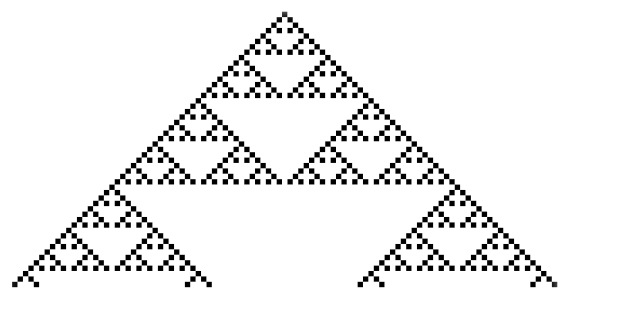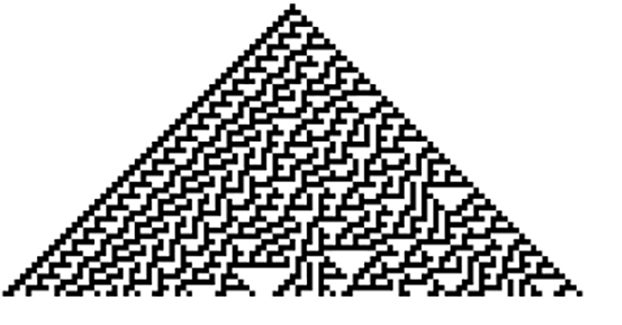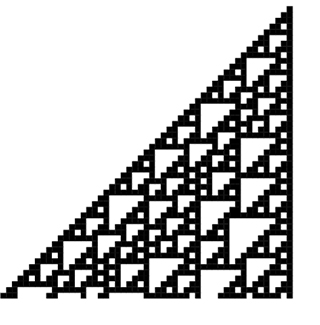|
Individual and Group Behaviour and Performance
Taking Control of Your Destiny
D. Flynn, J. Hay and R. Hill
Circumstance and Self – Centrality and Differentiation
As the world lurches forward with increasing uncertainty, amid existential threats and isolation, the relationship between self and circumstance has become more apparent than ever. When ‘business-as-usual’ slows to ominous ambiguity, we are reminded of our nature as social entities and led to examine the lines between circumstance and self.
It seems that the behaviour of a social entity, whether a group or individual, depends not only on a wide range of environmental factors, but also its ability to cope and adapt to an environment. This relationship determines our every action and has fascinated scientists across a wide range of disciplines and generations. When discussing this relationship, centrality (or c) refers to all the information presented by the environment to that entity as well as the entity’s perception and interpretation of the information. Differentiation (or d) is the talent and ability of that entity – and ultimately the entity’s true self. Presented as an equation, behaviour in this case depends upon the ratio of d/c. Familiarity with the relationship between c and d is valuable not only for examining behaviour, but also for guiding and shaping the entity. By consciously managing d and c simultaneously, one can change direction and ultimately take control of one’s destiny and increase the probability of success in one’s future endeavours.
Suprasystems and Complexity Theory
It is valuable to look at social entities as interconnected systems – or Suprasystems. In this sense, a group of people is a Suprasystem, containing a number of discrete, individual subsystems. Similarly, an individual is a Suprasystem in themselves, containing each system of the body as its subsystems. When viewing social entities through this lens, it is possible to reveal the relationship between c, d, and self-actualization. For these systems, actualization for individuals stems from a state in which d is greater than c, and ultimately adds value to the whole of the Suprasystem. Furthermore, as Suprasystems of discrete individual systems, it is possible to categorize and examine their behaviour.
Computer scientist and physicist Stephen Wolfram (ref) studied billions of such systems and found their behaviour fell into four distinct categories. These behavioural categories include two distinct types of ordered systems, as well as chaotic, and complex systems.
The idea of four and only four states of behaviour and the concepts of d and c allow us to understand how groups and individuals change behaviour.
The behaviour of each of these systems can be illustrated using computer modelling, with a system made up of black and white pixels. Each row of pixels represents a unit of time, with the top row representing the chosen initial conditions (a single black cell in this case). The value of cells in the next row is based on the value of its nearest neighbour to the right and left. These relationships represent Boolean rules, an example of which states “if the right neighbor is white and the left neighbor is white and the cell itself is black than the value of cell in the next time row will be white”.
The premise of the system reflects our understanding of c and d, in which c describes the initial conditions while d describes the Boolean rule. In this case, c is assessed, perceived and interpreted, then d beats like a drum according to the rule of the entity. This action occurs at an individual, or micro level. At the macro level the pattern and structure evolve according to the initial conditions and the rule.
By starting with the simple black cell and applying all the possible rules (156) for this simple example yields only the four states of the system as illustrated below.
Order 1

Order 2

Chaotic

Complex

The first type of order (order 1) is characterized by rigid structures, while the second (order 2), has changing structures. In both types of order, a change in one locality remains local. Conversely, in a chaotic system, any local change quickly spreads through the system. A complex system is a mixture of both order and chaos in which the nature of change depends on where it is located. Changes in the ordered area remain local, while changes in the chaotic cause it to spread through the system.
These categories have endured Wolfram’s study of billions of discrete systems. When considering groups of individuals and the relationship between c, d, and self-actualization, the movement between these behavioural states relies on a rebalancing of the ratio between d and c. The significance of the complex state when d is slightly bigger than d is that emergence can occur in the complex state.
The Edge of Chaos
It is clear that these states of behaviour apply not only to the systems studied by Wolfram, but to discrete systems as groups of individuals or as individuals as well. The behaviour expressed in Order 1 is easily visualized as a military unit, and as in everyday life repetitive Order 2.
These ordered states of behaviour exist, for a group or individual in cases where d is greater than c. A chaotic state such as war is just as easily understood, in which c is greater than d. The complex state is not only the most significant of these, but also the least understood. It is the creative state – a state in which emergence can occur and from which new innovative outcomes are developed.
The significance of this state is illustrated by an example, in which a facilitator brings a group of individuals to the complex state and leads them to experience new understandings. To achieve this state, he works to reduce c by bringing everyone to a location far from home (St. Andrews, NB) – freeing them from the many distractions of their normal lives. Having reduced c, he then works to increase d by building trust and understanding between the participants. He does this by forcing them to talk about themselves and illustrate their talents. Over two days of the undertaking, the group grows closer together and individuals report being in a different “zone” of understanding and perception. The reduction of c and nourishment of d ultimately led to newfound creativity and a new set concepts and ideas that were useful to them.
Individuals as Suprasystems can similarly explore their true selves and experience their own c and d through the process of self-observation. Self-observation is a process central to many technologies, including the science of Yoga. However, this exploration depends on a strong sense of individual confidence, trust, safety, and security. These critical aspects of self-confidence are necessary for the undertaking of self-actualization.
The Yoga Sutras of Patanjali outline several considerations in the practice of Yoga and self-exploration. The very first is “And now Yoga”, meaning you may have tried many other practices before trying Yoga, and now you choose Yoga. The second states “Yoga is the stilling of the changing states of the mind”, referring to the control of c. The third states “when that is accomplished the seer abides in their own true nature”. This is experience of the emergence of the core of the individual or group and is equivalent to being in the complex state.
For the individual, the idea of the complex state has been known by countless names, with many of them accessed through meditation. Here the individual experience of “being” mat emerge, wherein the true self can be experienced as it emerges. Through contemplation and meditation, the individual reduces c as well as the activity of their mind. At this stage, the individual has focused their attention and awareness to a single point – their physical and mental activity reduced to near stillness. In Yoga this is most effectively accomplished in the present moment. Yoga stresses this precondition, which represents a reduction of c. Once reduced, the individual can de-energize c.
Having de-energized c, the individual must “cross over to the other side” – leaving that central focus and moving to explore ‘inside oneself’. The individual begins to focus their attention and awareness on the emergence of this inner self, the true self, which is often covered up by the movement of the mind and body. This is the essence of d – or the source of d – the individual’s own true differentiated self at its core. The individual achieves a small positive d/c, wherein the experience of the true inner self is felt, and the surrounding c is the lesser of the two influences.
The individual in this “Being” experiences new insights into himself and the world he lives in. The complex state from which these insights emerge is characterized by duality where both chaos and order are present. However, in one direction lies the emergence of a greater order which can be realized. At this stage the individual has the potential to be in control of their own destiny.
The significance of this inner self has made itself apparent across countless cultures and disciplines. It had similarly occurred to psychologist Abraham Maslow when he posited that an individual’s inner nature was comprised of two parts – one species-related, and the other unique to the individual. Though our perception of this unique part is weak and can be easily misunderstood, the individual can endeavour to discover this as their true self.
This inner nature can be experienced and appreciated as an internal source of motivation that can be realized and actualized. Experiencing this inner nature is “Being” - or self-actualization. Being emerges from the complex state. It is in this state that trust can develop and grow as we uncover and grow d. Once d has grown, c can be brought back to life from its previous state of reduction. As c is re-introduced, the individual or group can carry on, equipped with a strong inner core of knowledge and value and appreciation of capabilities, talents and core capacity.
When we have experienced our inner true nature – our core capabilities and talents and our true differentiated self ‘d’ – we are able to self-actualize our Being in the complex state. Through an awareness of both externalities and the true self, one can manage them purposely towards their objectives in the surrounding world and for their own true self. Such management can create a new ordered state. Then, just as the behaviours of complex systems occur at a micro and macro level, one can move from self-actualization to systems actualization.
The complex systems from which actualization emerges are characterized by the co-existence of order and chaos. The delicate balance between c and d creates an experience of emergence, creativity, and innovation. In the case of a world engulfed by a global pandemic, individuals have experienced empathy, compassion, and a feeling of interdependence only before discussed in theory. As the gears of the external world grind to a halt, the individual is left to look inward, and return with an unprecedented sense of understanding and recognition for each other social entities.
By changing the ratio of d to c to arrive at the complex state and to Being – we can change performance and behaviour. In this sense, self-actualization is not about self-discovery, but the enrichment of the vast system which encompasses us all.
|

